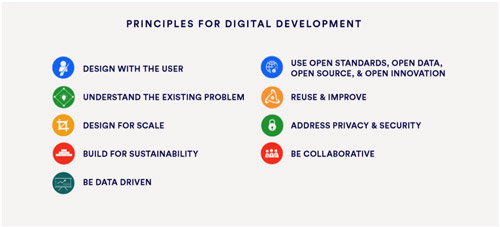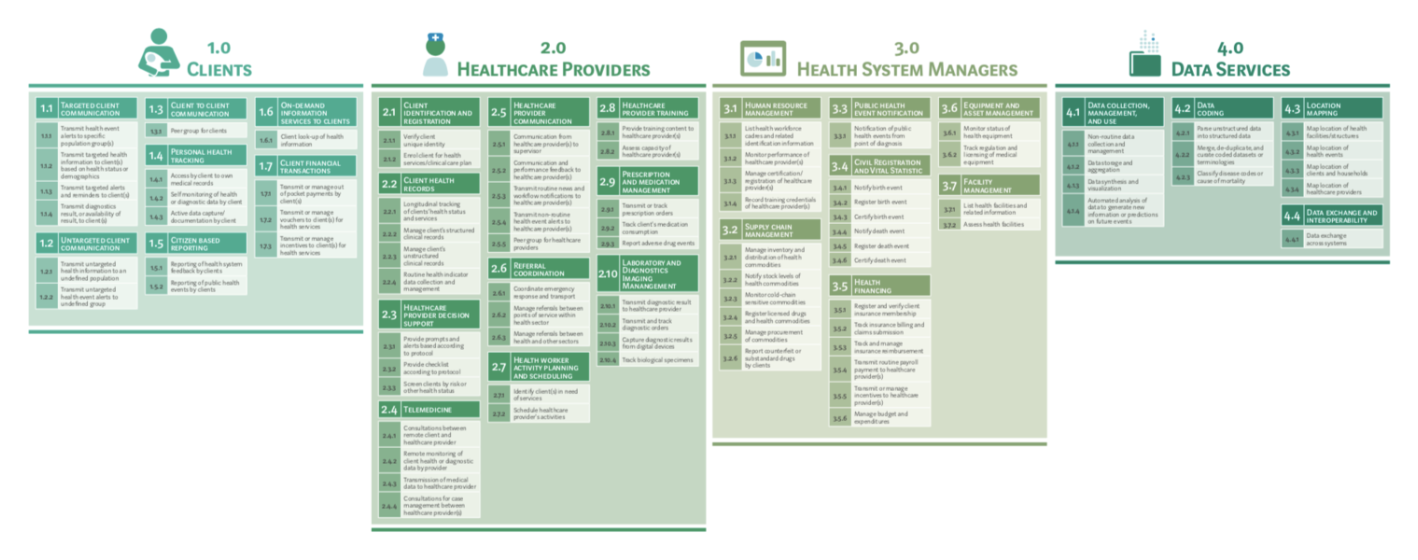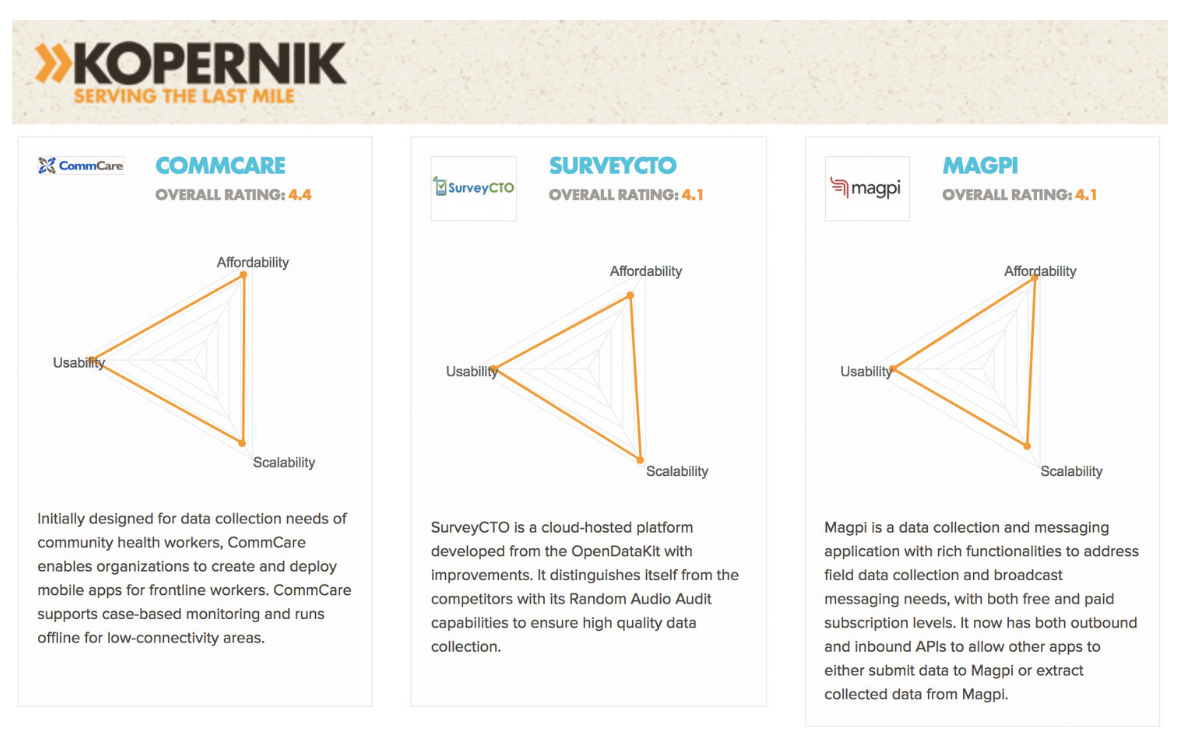In our last blog, we discussed why our industry has so many names and why we prefer the term “Digital Development.” Now that we’ve landed on a name, we’re sharing some of our favorite resources from the industry.
At TecSalud, we often get asked if we have any go-to Digital Development resources. Today we’re sharing a few of our introductory favorites. We will make sure to keep this blog up to date as new resources are regularly coming out.
A quick note about language: For those of us working in Latin America and the Caribbean, a reality is that the majority of Digital Development resources are only available in English. Our list below illustrates this. As part of TecSalud’s commitment to Latin America and the Caribbean, we create summary translation materials whenever possible and encourage others to do the same.
Front Page News
Looking to stay up to date with Digital Development news? Then make sure to bookmark ICTWorks.
 ICTWorks publishes three articles a week that cover a diverse set of topics – from project spotlights to technology trends to funding opportunities. The majority of content is written by guest authors, ensuring that the site’s estimated 30,000 readers are receiving diverse perspectives. You can check out ICTWorks’ website or sign up to receive ICTWorks emails in your inbox.
ICTWorks publishes three articles a week that cover a diverse set of topics – from project spotlights to technology trends to funding opportunities. The majority of content is written by guest authors, ensuring that the site’s estimated 30,000 readers are receiving diverse perspectives. You can check out ICTWorks’ website or sign up to receive ICTWorks emails in your inbox.
Runner-up (Health-Specific): If ICTWorks is the front page of the Digital Development industry, the Global Digital Health Network list-serv is where you’ll find the classifieds. Members post to the list-serv about 5-10 times a week, mostly as a way to advertise various funding and job opportunities or to announce upcoming industry events. It’s a great way to stay connected and hear from people in the digital health industry.
The International Treaty
Like any technology project, digital development projects must adhere to the local regulations where they’re implemented. For many African countries, that may mean banning drones from any digital development work. For European funders, that can mean structuring your data policy to comply with General Data Protection Regulation (GDPR) standards.
 Beyond local regulations, the Digital Development industry also has a set of international guiding principles called the Principles for Digital Development. These nine guidelines are helping digital development practitioners integrate best practices into their work, touching data, sustainability, design, and more. You can think of them as the Digital Development industry’s own Sustainable Development Goals (SDGs).
Beyond local regulations, the Digital Development industry also has a set of international guiding principles called the Principles for Digital Development. These nine guidelines are helping digital development practitioners integrate best practices into their work, touching data, sustainability, design, and more. You can think of them as the Digital Development industry’s own Sustainable Development Goals (SDGs).
Today, over 100 organizations have endorsed the Principles, including TecSalud. They’ve been so well-received that more organizations will only fund project that adhere to them. We often refer to the Principles in designing our own digital development programs and in learning from other organizations’ experiences.
The Wedding Seating Chart (Health Only)

Just like at a wedding, the digital health sector can often feel like a loud, crowded room, filled with tables of people you don’t recognize. SMS systems that send patients appointment reminders? Telemedicine platforms for doctors? Rapid diagnostics tests for technicians? What do all of these technologies do, and how do they relate to one another? Where are they seated?
To help people navigate the digital health ecosystem, the World Health Organization introduced their Classification of Digital Health Interventions framework in 2018 to “categorize the different ways in which digital and mobile technologies are being used to support health system needs.” If you’re looking for a solid, introductory resource for your research, proposals, or project design, check out this framework.
Runner-Up: Another useful resource is the Asian Development Bank’s Guidance for Investing in Digital Health report. This 2018 report clearly summarizes the digital health investment process and provides useful tools to help organizations make data-driven decisions about their investments. While the report focuses on digital health funding, it does an excellent job describing the overall system’s structure, players, and value.
The Third-Party Auditor

If this list were ranked, Kopernik’s Technology Catalogue would be our #1 pick.
A few years ago, the Indonesian NGO launched a project to test 40+ digital development technologies – including data collection apps, SMS platforms, geospatial mapping tools, sensors, and data analysis tools. This resulted in an in-depth matrix that compares technologies by their features and rates them based on affordability, scalability, and usability.
We highly recommend this to anyone interested in evaluating various Digital Development technologies. And don’t worry about this getting stale – Kopernik updates the entire matrix every few years.
The Job Board
 Thinking of making a career switch into or within Digital Development? Then make sure you are subscribed to ICT4D Jobs!
Thinking of making a career switch into or within Digital Development? Then make sure you are subscribed to ICT4D Jobs!
Subscribers receive a bi-weekly email with 15-20 openings at various organizations, ranging from entry-level to senior positions. The emails also feature practical career advice and provides insights into industry trends, including, as one testimonial states, “which technologies are on the rise, which organisations are launching interesting projects, and where development funding is being directed.”
Runner-Up: Even though it’s not focused on technology, the Social Enterprise Jobs Google Group often features social impact jobs that have interesting technology components. We recommend occasionally scanning this group to learn about new organizations working with technology in the social impact space.